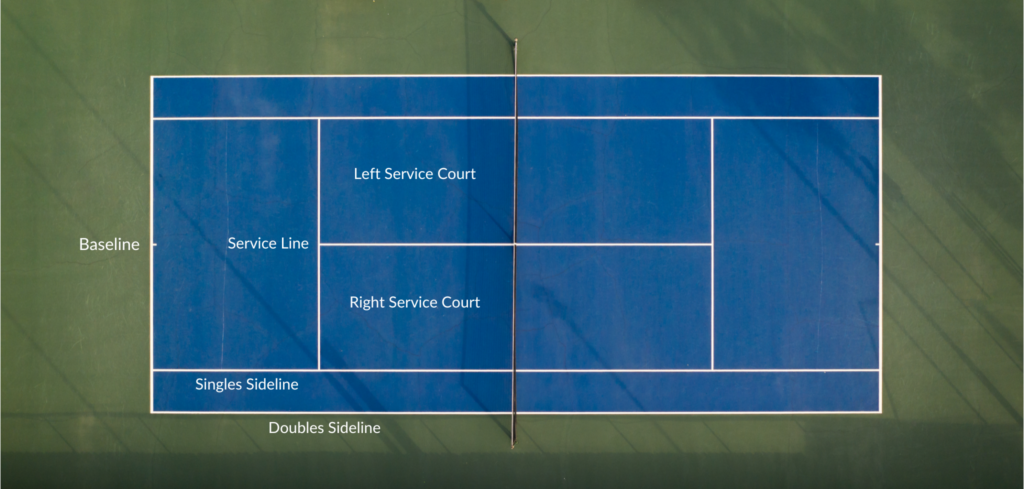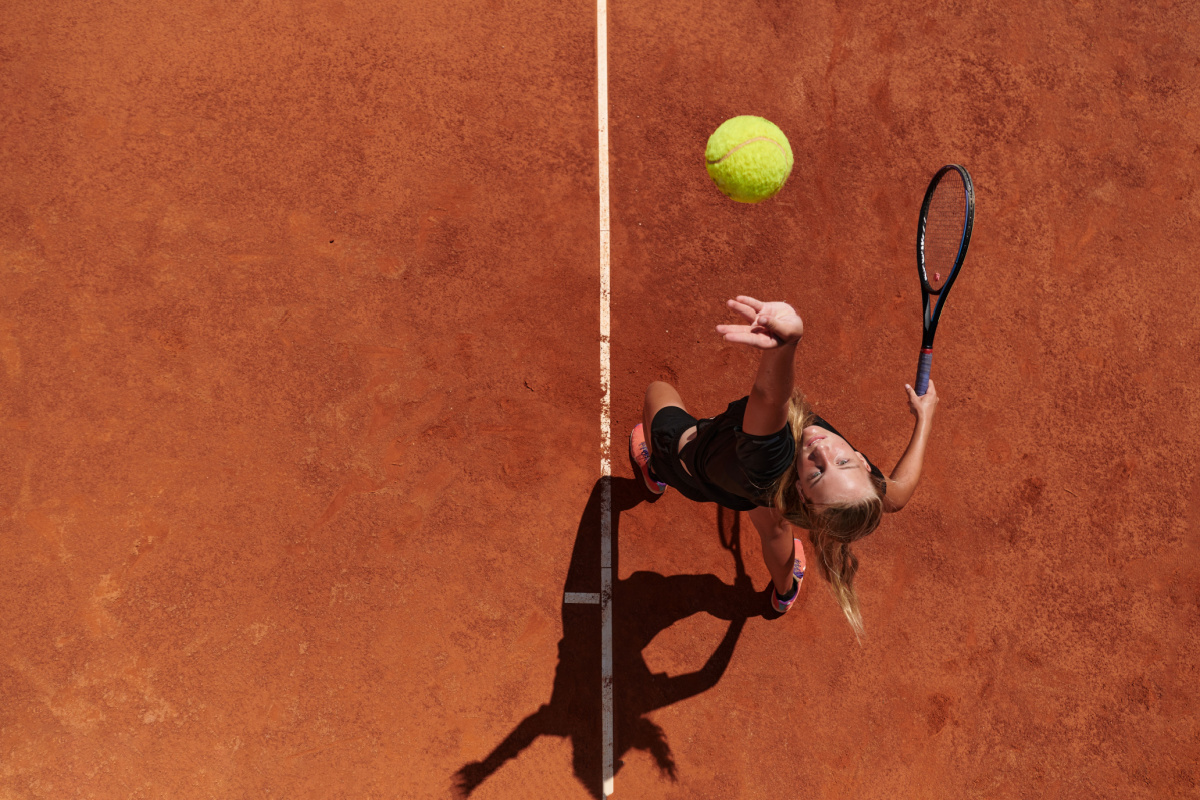Want to know the difference between an ace and a dropshot? For the basic rules, read through our complete guide to understanding tennis!
First, there are two types of tennis matches:
- Two players (called a singles game). Each player competes against each other.
- Four players (called a doubles game). Split into two teams of two people.
Next, what equipment do you need to play tennis?
- A tennis ball.
- A tennis racket for each player.
- Access to a tennis court.
- A tennis net.
Moreover, tennis is a high-intensity sport, so you’ll need to wear appropriate footwear and active wear to ensure that you can enjoy yourself on the court.
Understanding the basics of tennis:
Tennis, at its core, is simple. The game is played on a rectangular court, divided in the middle by a tennis net, and a white border that defines the limits of the game. The goal is to hit the ball over the net into your opponent’s side of the court to score points.
There are a couple of ways to score points in tennis:
- When a player fails to return the ball into the correct court, the opponent wins a point.
- Once on your side of the court, the ball can only bounce once before it must be hit back to the other side of the net and within the boundaries of the court. If the ball bounces twice on your side, the other team scores a point.
- If you hit the ball and it lands outside of the court, the other team gets a point.
There are also some general rules to keep in mind when playing or watching tennis:
- Once you hit the ball, you cannot hit it again until the opponent has hit it and returned the ball to your side.
- Players are not allowed to touch the net or cross to the other side.
What are the elements of a tennis court?
The tennis court can be broken down into several different elements. The white lines define the border of the court. The ends of the court is called the baseline and is where each player starts at the beginning of a serve and game. The size of the court, however, is determined by whether it is a singles or doubles game. A singles match is played within the singles sideline, while a doubles tennis game is played within the doubles sideline.

Layout of tennis court. Photography by Luciano Santandreu. Image via Shutterstock. Annotations by Dino Vlachos.
How does scoring work in tennis?
Scoring in tennis at first can seem a little unusual. At the beginning of a game, each team starts with 0 points (also called love). For every successful point, the score goes up to 15, 30, and 40 points in that order. The next point after 40 is called game, and that team wins, as shown below.
- 0 points = Love
- 1 point = 15
- 2 points = 30
- 3 points = 40
- 4 points = Game
However, if both teams get to 40 before anyone scores game, the rules are a little different. The team will need to score two consecutive points in order to win the match. For example, if Team A scores a point, they get what’s called advantage. If they get the next point, they win the game. However, if Team B scores a point, both teams go back to 40, and will need to get the next two points to win the game. This means that a game at this stage can go back and forth, until one team gets two points after the other.
This is but the start, however. The team will need to win six games to win a set, and be at least two games ahead. To win a match, you need to win two sets.
How to serve in tennis?
At the beginning of each match, a coin is flipped to decide on order of who will serve first. One player is the server, while the other is the receiver. The server will be the only person to serve for that game; once the game is over, each team swaps from one side of the court to the other, and they get a chance to serve.
To start, each player stands at either end of the court. The server must come up to white border of the court, and serves the tennis ball over the net. The server must serve the ball diagonally across to the other player in the service box, or the middle white line.

Young woman playing on tennis court. Photography by Africa Studio. Image via Shutterstock
What are the different types of serves in tennis?
There are several different types of serves, including the flat, slice and kick serve, which is determined by where and how you hit the ball.
What are faults in tennis?
When a person is serving, there are two errors or faults that can occur:
1. The first is called a ‘foot fault’; when serving, both feet have to be behind the baseline, or the distant white line.
2. The second is a service fault. This is when the ball either doesn’t go over to your opponent’s side of the court, or when it goes too far past their baseline. For example, if the ball hits the net and comes back to your side of the court, that is a fault.
If you receive a serve fault, you try again. However, if your second attempt fails, you get a double fault, where you opponent gets a point.
For those needing a little more clarity between a game and a set, check out this video for a full breakdown.
Learn about some other tricky sports with our breakdown to Cricket for Dummies: A Beginner’s Guide to Understanding Cricket. And check out some of the most interesting stories in sport with this list to the 10 Best and Most Motivational Sport Documentaries to Stream Now.


